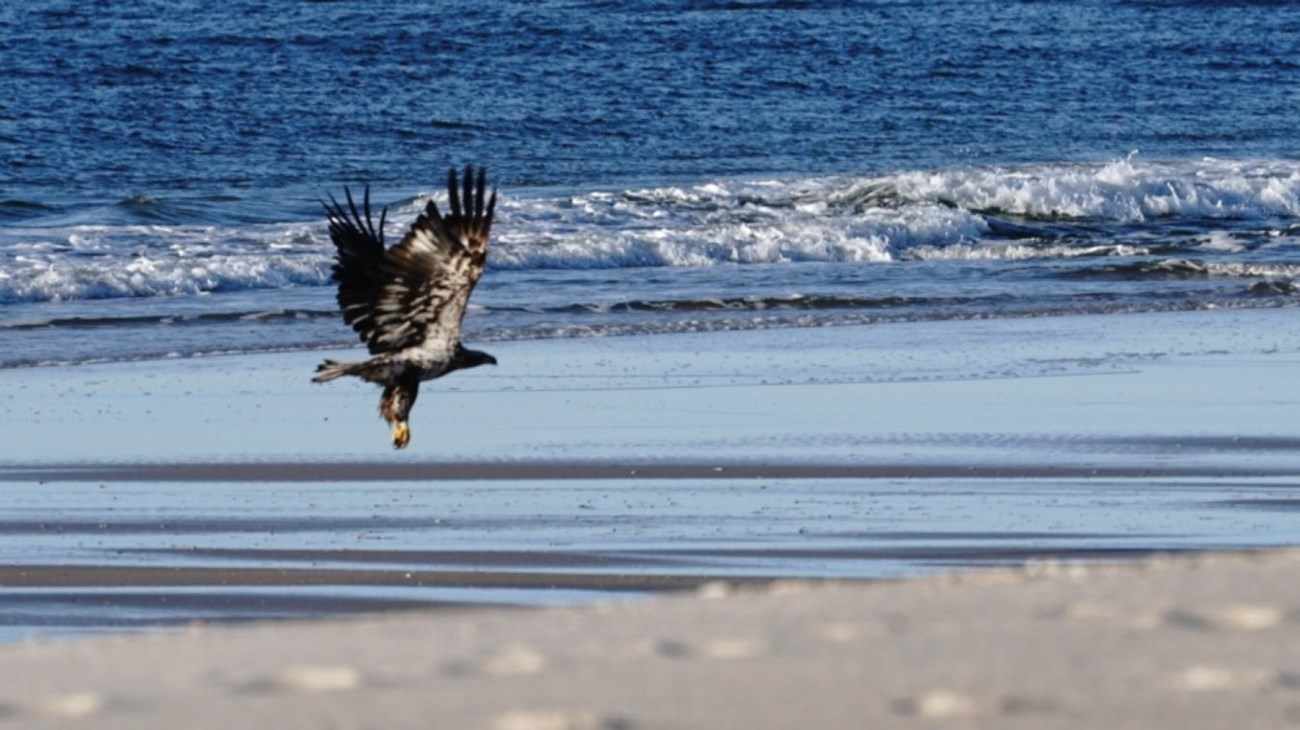Last updated: April 27, 2021
Thing to Do
Birding at Fire Island

NPS/Sucena
Birdwatching Locations (From east to west):
William Floyd Estate
The William Floyd Estate borders Moriches Bay, thereby making it a very exciting place to find many different species of birds. The 613 acres has a variety of habitats such as fields, woods, and creeks that flow into the bay. It's vast salt marshes are a haven for waterfowl, wading birds, and over 20 species of shorebirds seasonally. It is a magnet for migrating neotropical species such as warblers, vireos, and thrush in the spring and fall. Year round resident bird species that can be seen are red tailed hawks, wild turkey, eastern bluebirds, and a variety of woodpeckers and small birds such as black-capped chickadees and white-breasted nuthatch.
Wilderness
The high dunes and wide beaches found along the seven-mile stretch of federally-designated wilderness on Fire Island National Seashore provide great opportunities to see shorebirds year-round. Sanderlings are likely the most common shorebird here, frequently seen in small flocks, scurrying to and for by the waves. A lone ruddy turnstone or semipalmated sandpiper – shorebirds that are found in greater abundance along Fire Island’s bay beaches and marshes – will sometimes join these sanderling flocks. The federally threatened and New York State endangered piping plover can also be observed in wilderness.Watch Hill
Fire Island’s most expansive salt marsh is found at Watch Hill. This tidal marsh is a good place to look for herons and egrets, and red-winged blackbirds. At low tide during the warmer months, these long-legged wading birds can sometimes be spotted in the ponds which dot the salt marsh.Sailors Haven
The Sunken Forest, a mature maritime holly forest at Sailors Haven, provides dense cover for migrating warblers. Other birds, such as the Eastern towhee, can be heard from late spring through the summer rustling through the leaves on the forest floor in search of its insect prey.
Fire Island Lighthouse
In September and October, the raptor-viewing platform just east of Robert Moses State Parking Field 5, near the Fire Island Lighthouse, is a fantastic place to watch the hawks on fall migration. Raptors tend to fly in a pattern across the island near the raptor-viewing platform. In winter, waterfowl can also be spotted in the Great South Bay.
Learn More and Become a Citizen Scientist Birder
From the Christmas Bird Count and Great Backyard Bird Count to tracking your observations through eBird, there are numerous opportunities to turn bird watching into valuable citizen science records. The National Park Service offers bird watching programs for beginners and children, and leads the CBC and GBBC each year.
If Fire Island National Seashore is in your "backyard," or you have come for a visit, you can provide your observations during a park ranger-led bird count or program or through eBird, an online checklist program.